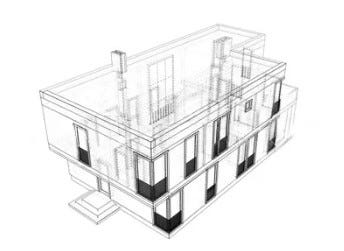Unlocking the Potential of BIM Modelling Services for a Better Future

In today’s dynamic world of construction and infrastructure development, technology plays a pivotal role in shaping the future. Building Information Modeling (BIM) has emerged as a transformative force, revolutionizing the way we design, construct, and manage buildings and infrastructure. This article will delve into the world of BIM modelling services, exploring their significance, applications, and how they are becoming a game-changer in the industry.
What is BIM?
BIM, or Building Information Modeling, is a digital representation of a building’s physical and functional characteristics. It goes beyond 3D modelling by incorporating aspects of time and cost, making it a comprehensive tool for managing projects. In essence, BIM is a collaborative process that allows multiple stakeholders, including architects, engineers, contractors, and owners, to work on a single platform.
The Significance of BIM Modelling Services
BIM modelling services are not just a trend but a necessity in the modern construction industry. Here’s why they are gaining so much importance:
1. Improved Collaboration
One of the primary benefits of BIM is its ability to enhance collaboration among various project stakeholders. Unlike traditional construction methods that often lead to communication gaps and errors, BIM encourages a seamless exchange of information. This results in a reduction of rework, increased efficiency, and ultimately, cost savings.
2. Enhanced Visualisation
BIM models offer a 3D representation of the building, allowing stakeholders to visualize the end product more accurately. This aids in identifying design flaws and making necessary modifications before construction begins, preventing costly changes during construction.
3. Time and Cost Efficiency
BIM’s capability to incorporate time and cost elements in the model provides better control over project timelines and budgets. This ensures that projects are completed on schedule and within the allocated budget, reducing the risk of unexpected overruns.
4. Sustainable Design
BIM modelling services can facilitate sustainable design and construction. By simulating the environmental impact and energy usage of a building, it enables the integration of energy-efficient and eco-friendly elements into the design.
5. Facility Management
BIM’s utility extends beyond the construction phase. It continues to be a valuable asset during the building’s operational stage, aiding facility managers in maintaining and optimizing building performance.

Applications of BIM Modelling Services
BIM is versatile and applicable in various domains. Here are some notable applications:
1. Architecture
Architects use BIM for design, visualization, and collaboration. It helps them create accurate, innovative designs while facilitating effective communication with other project stakeholders.
2. Engineering
Engineers rely on BIM for structural analysis, system coordination, and clash detection. This ensures that the construction process runs smoothly, with minimal setbacks.
3. Construction
In the construction phase, BIM is invaluable for project management, scheduling, and resource allocation. It allows for better coordination among contractors and subcontractors.
4. Real Estate
Real estate professionals use BIM to market properties effectively. It provides clients with immersive virtual tours and detailed property information.
5. Facility Management
After construction, facility managers use BIM to streamline maintenance operations, track asset performance, and plan for future renovations or upgrades.
The Future of BIM
The adoption of BIM modelling services is expected to grow exponentially. As technology advances, BIM will continue to evolve, offering even more sophisticated capabilities. In the near future, we can anticipate:
1. Integration with IoT
BIM’s integration with the Internet of Things (IoT) will enable real-time monitoring and control of building systems, enhancing efficiency and sustainability.
2. AI and Machine Learning
Artificial intelligence and machine learning algorithms will help in data analysis and predictive maintenance, optimizing the performance of buildings and infrastructure.
3. Virtual and Augmented Reality
The use of virtual and augmented reality in conjunction with BIM will allow stakeholders to experience buildings and designs in an immersive way, leading to better decision-making.
4. Increased Collaboration
BIM will become more accessible and user-friendly, encouraging even greater collaboration among all stakeholders in a project.
BIM modelling services have already made a significant impact on the construction and infrastructure industry. Their ability to enhance collaboration, improve efficiency, and reduce costs is transforming the way projects are managed. As technology continues to evolve, the potential for BIM is limitless, making it an indispensable tool for building a sustainable and efficient future.
So, whether you’re an architect, engineer, contractor, or simply curious about the future of construction, Then you must visit Geninfo Solutions, they are the leading BIM services provider in canada. If you want to complete your dream project with the help of BIM Modelling then you can contact Geninfo Solutions.

Comments
Post a Comment